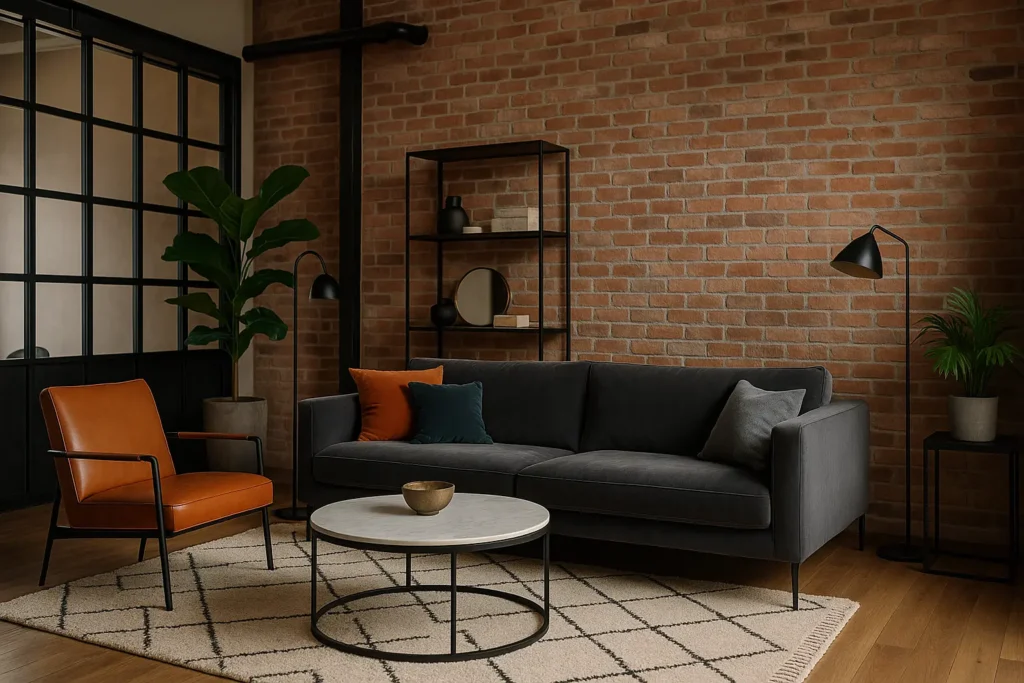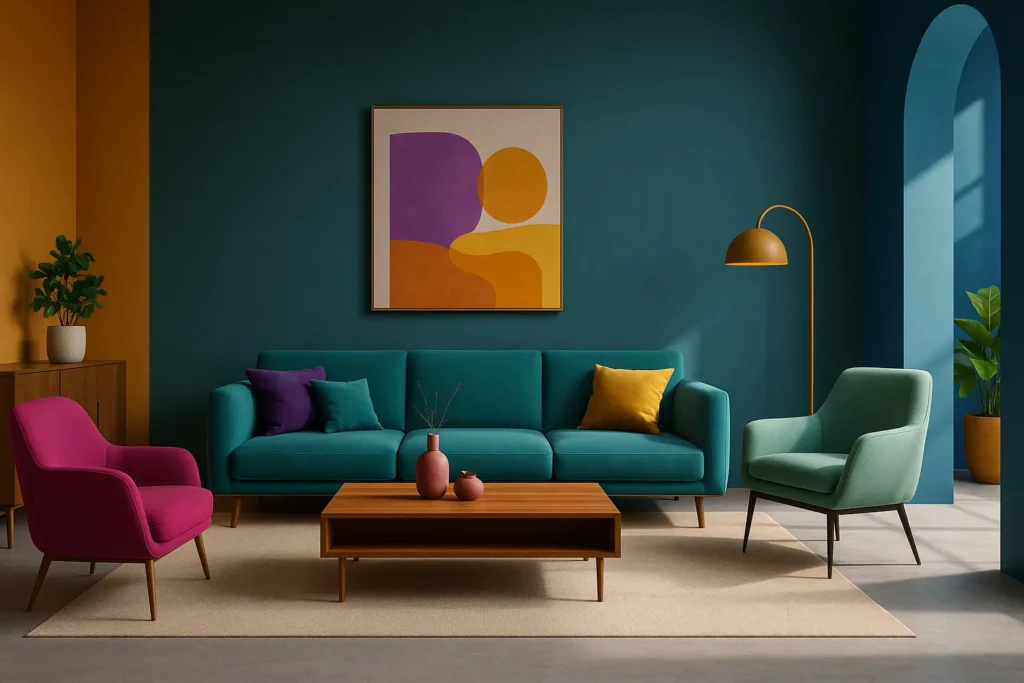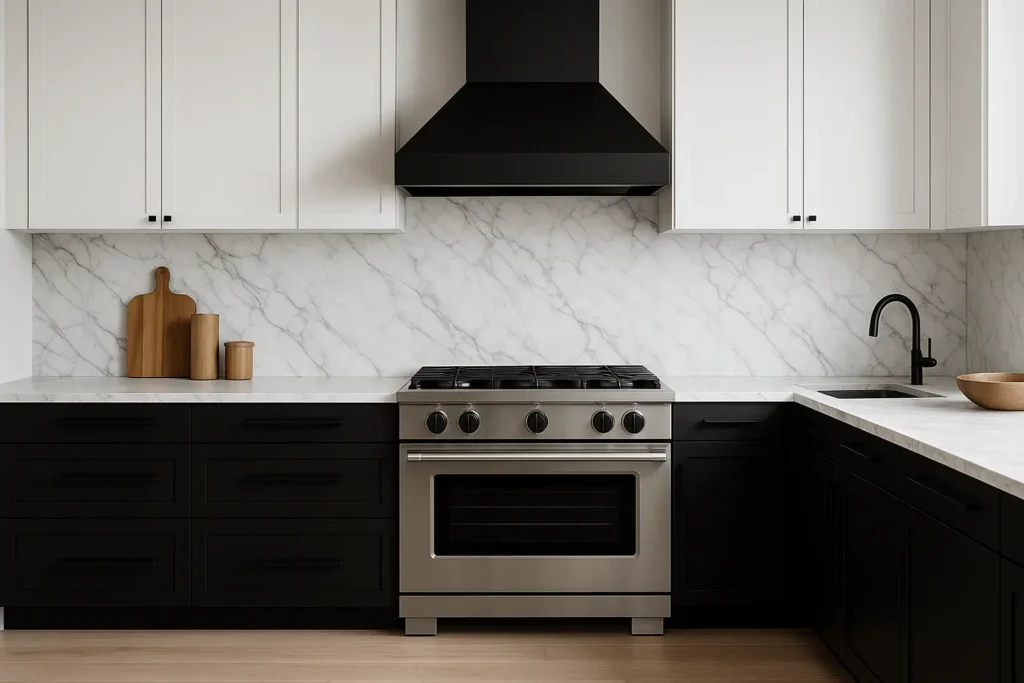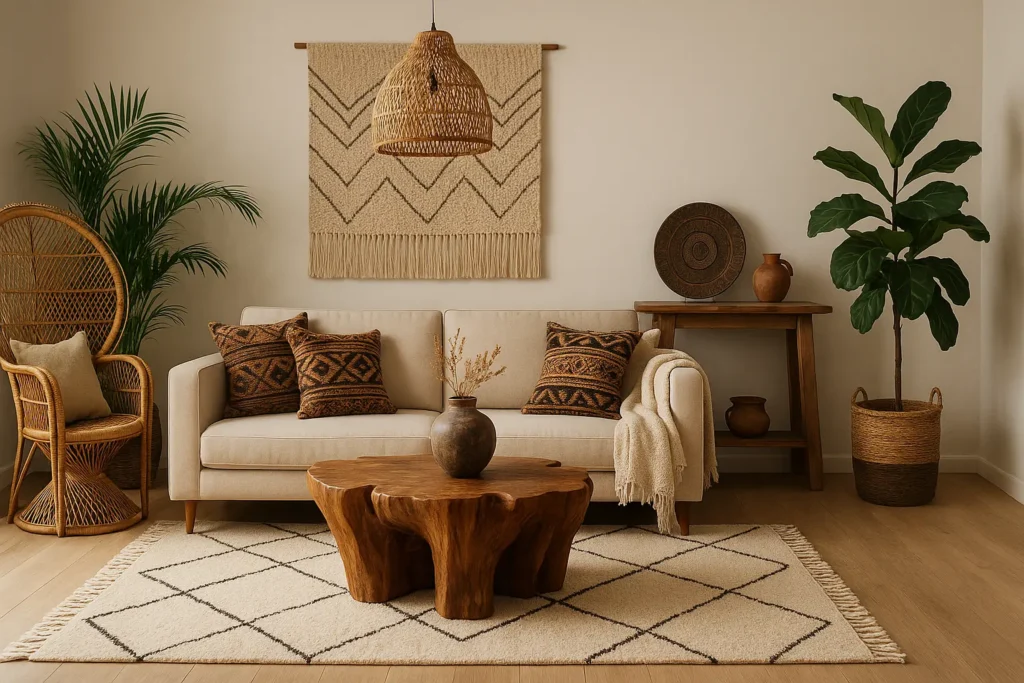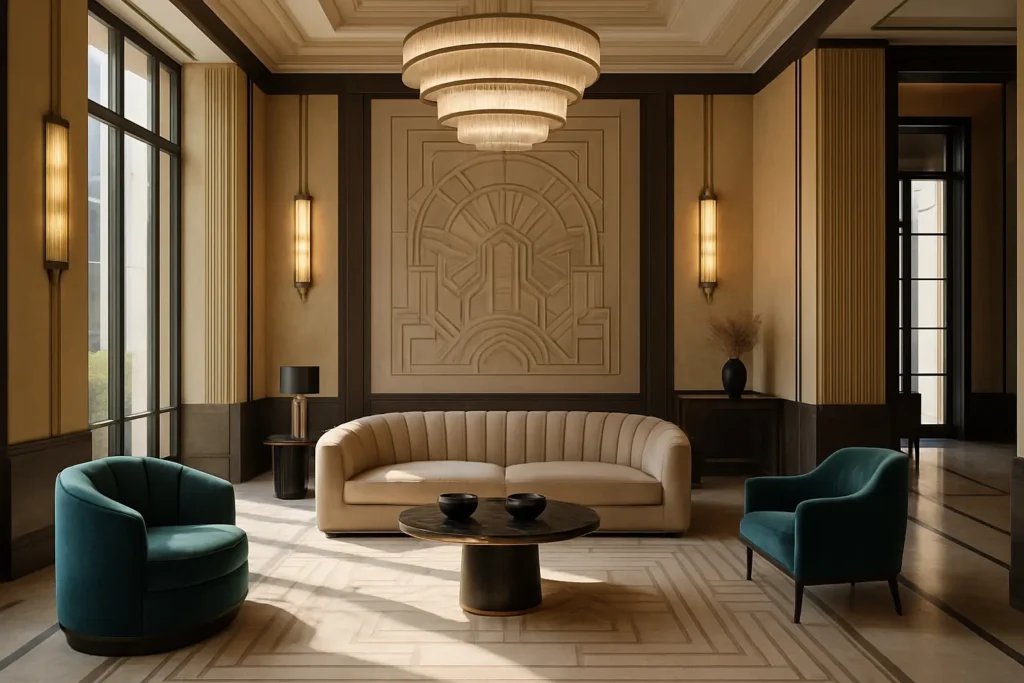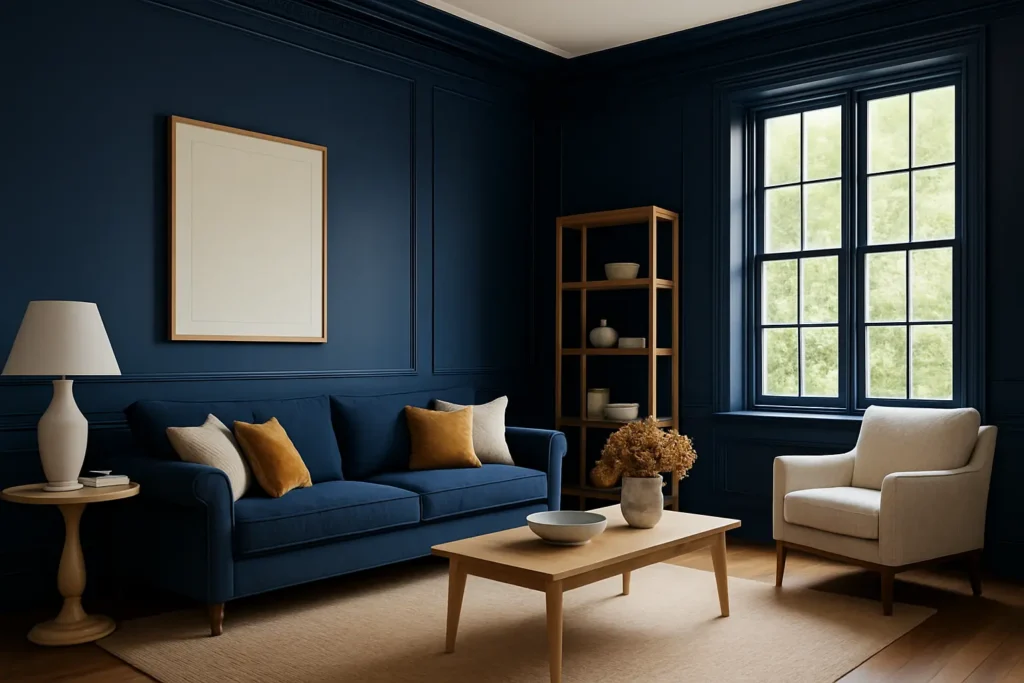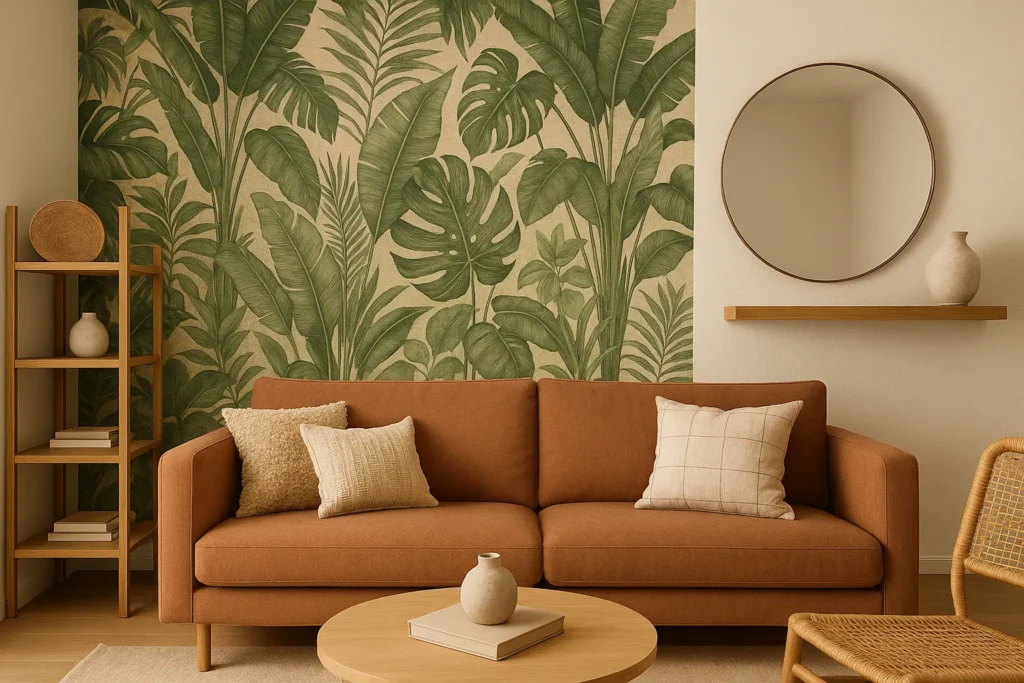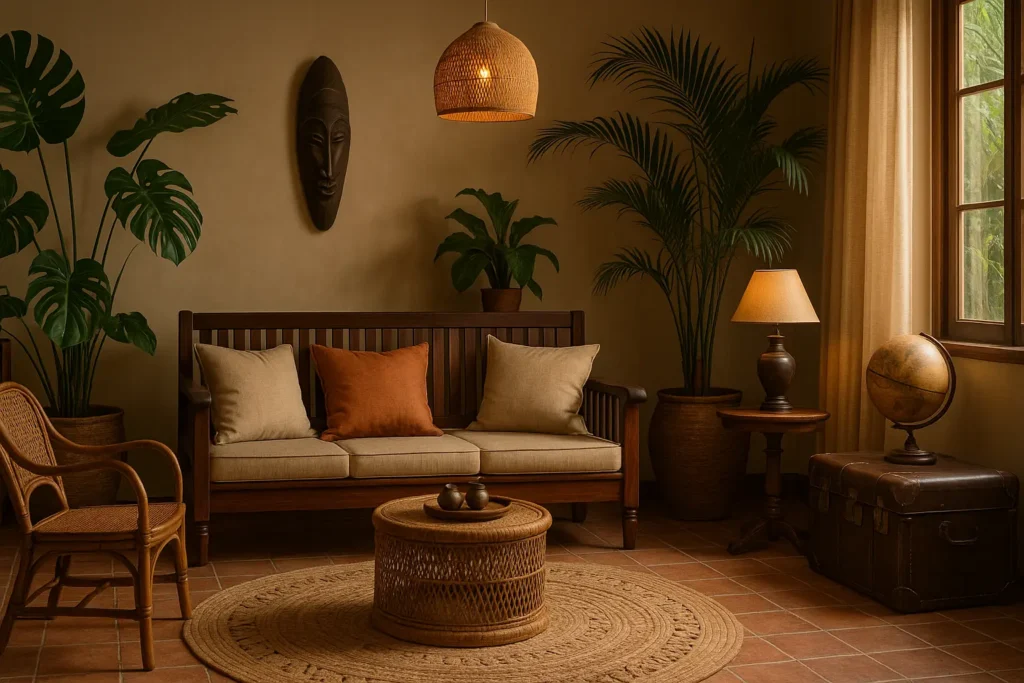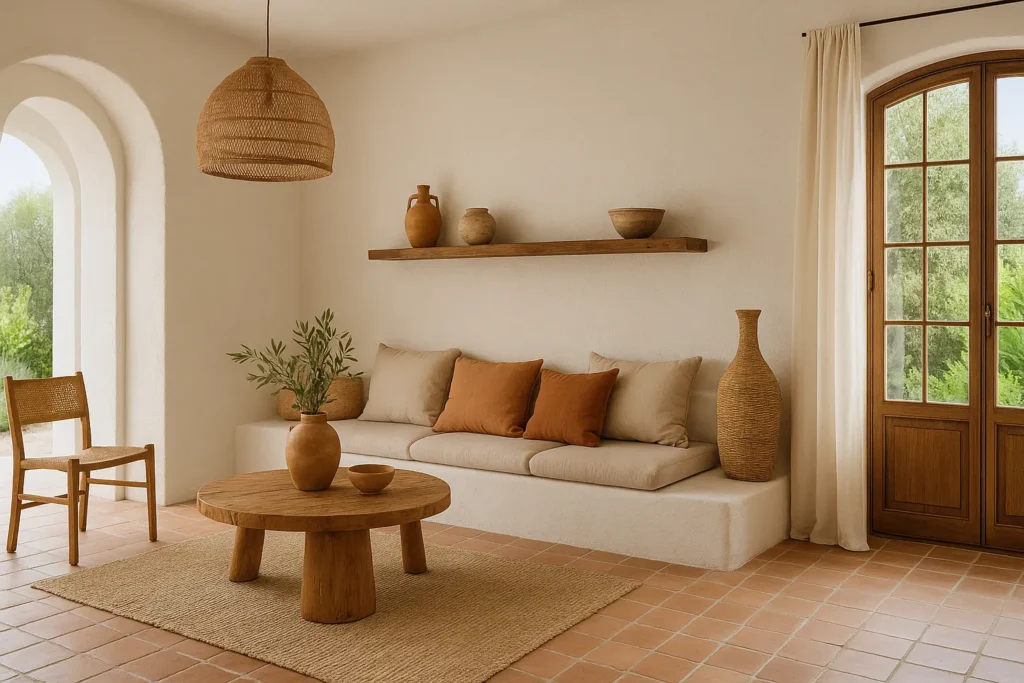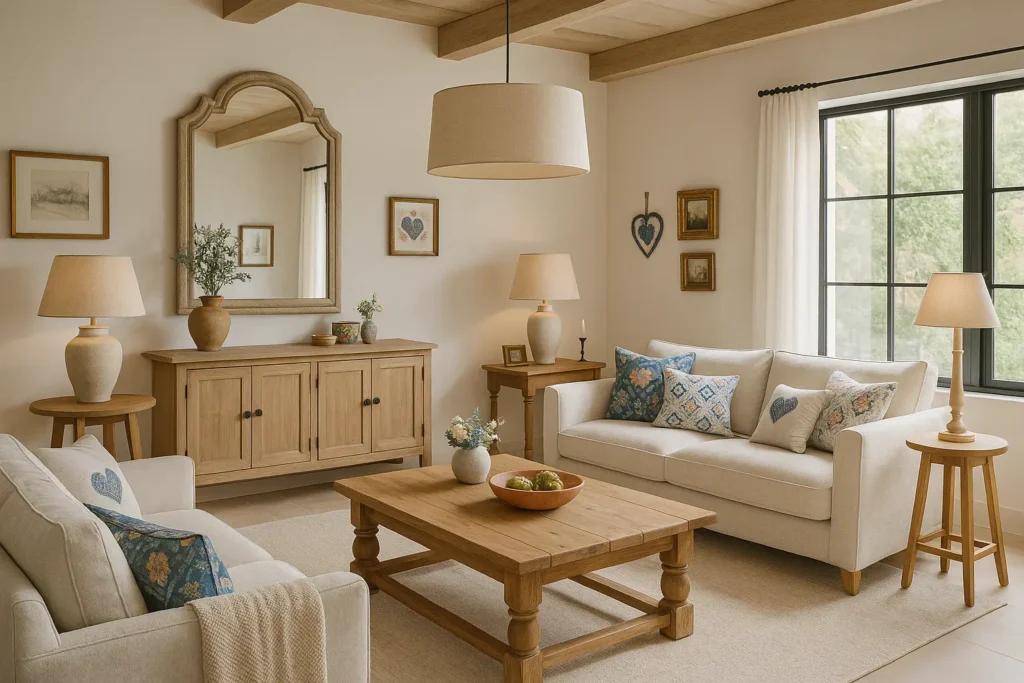The Victorian era, a prosperous period that lasted from 1837 to 1901, marked the height of British power. This period saw the birth of an incomparable decorative style: Victorian styleThe latter was the perfect reflection of the opulence and refinement that characterized the United Kingdom at the height of its imperial glory. Victorian style still embodies the essence of British luxury today with its sumptuous interiors, imposing furniture and delicate ornaments. A true invitation to travel back in time, the Victorian style continues to seduce lovers of sophisticated decoration. Let yourself be guided into the attractive world of this style rich in history and discover how to breathe this timeless British elegance into your home. House.
Our article in brief:
THE Victorian style embodies the opulence of the 19th-century British home. It blends colonial influences with the decorative refinement characteristic of an imperial power at its height. Here are its key features:
- The The Victorian style goes through a mixed aesthetics combining British tradition and exotic colonial influences
- Materials noble and durable like mahogany, velvet and marble are the very foundations of Victorian style
- There Victorian style decoration is rich in deep hues (burgundy, fir green, chocolate brown)
- The Victorian-style house is furnished with imposing furniture with carved ornamentation testifying to a craftsmanship of excellence
In this article
The Historical Roots of Victorian Style: Splendor of an Era
THE Victorian style takes its name from the reign of the Queen Victoria, sovereign of the United Kingdom for 64 years. This long period coincided with the height of the British Empire, whose influence extended over nearly a quarter of the globe. London then shone as the world metropolis par excellence, the nerve center of an unprecedented empire.
The Industrial Revolution was profoundly transforming British society. Technical advances and innovations in metallurgy and railways enabled the emergence of a prosperous and influential bourgeoisieThis new social class, enriched by commerce and industry, aspired to display its success through its housing and its possessions.
The year 1851 marked a turning point with the organization of the first World's Fair at the Crystal Palace in London. This grandiose event celebrated British industrial and artistic power while showcasing wonders from all corners of the Empire. This exceptional event had a lasting influence on Victorian taste and aesthetics, opening the door to an unprecedented cultural and artistic mix.
Colonial influence: when the Empire inspires decoration
Trade and cultural relations with the British colonies profoundly shaped the aesthetics of the Victorian houseIndian motifs, Chinese porcelain and Egyptian antiquities found their way into British interiors, reflecting the fascination with the Orient and distant lands.
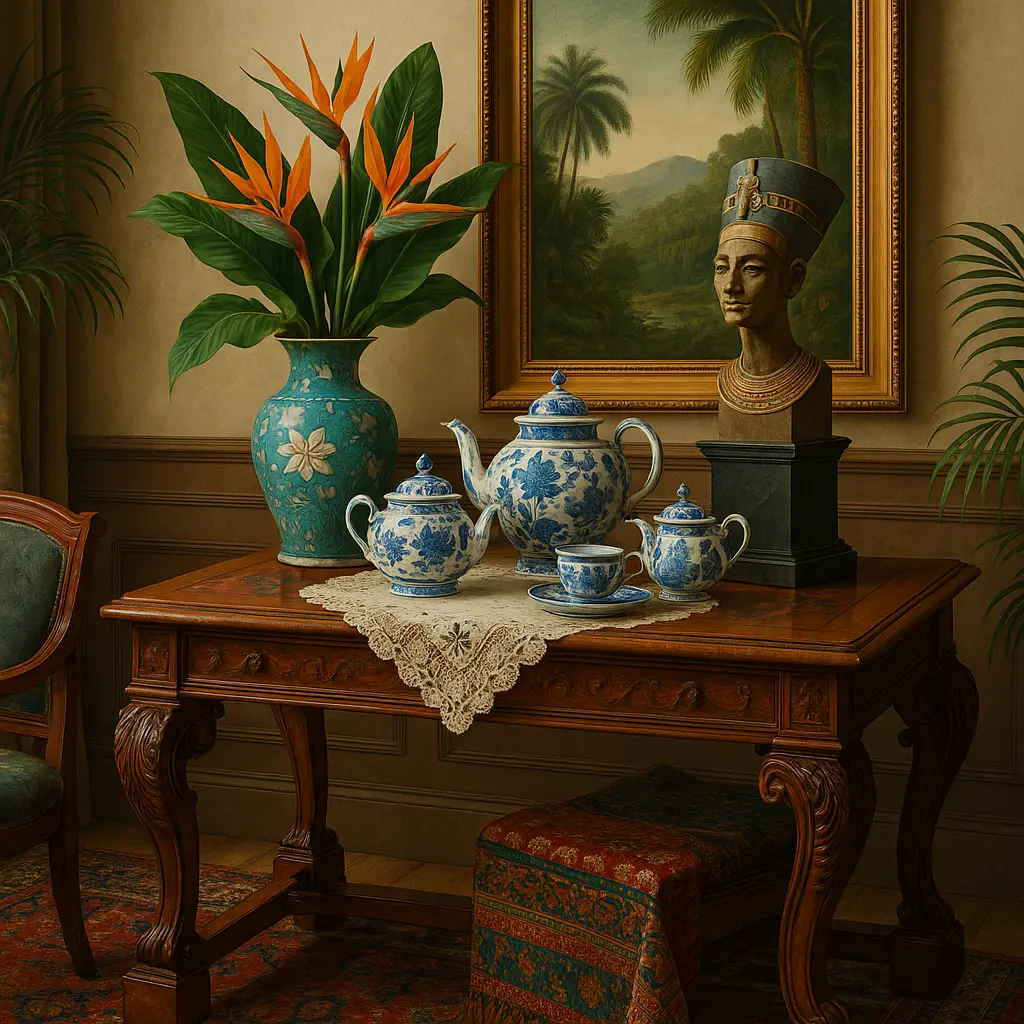
Travelers and merchants brought back precious textiles, exotic woods and objets d'art that enriched Victorian homes. fusion between British tradition and colonial influences gave birth to an eclectic and rich style, a true reflection of imperial power: the Victorian style.
Persian rugs sat alongside mahogany furniture, while Chinese tea sets complemented English lace placemats. This blended aesthetic reflected a changing world, where cultural boundaries were blurring in favor of a refined, cosmopolitan way of life.
The Evolution of Style Through the Victorian Era
THE Victorian style is not fixed but has evolved over the decades. The early period (1837-1850) is characterized by cleaner lines and a still marked neoclassical influence. The mid-Victorian era (1850-1870) saw the emergence of a more exuberant style, with abundant ornamentation and pronounced Gothic references.
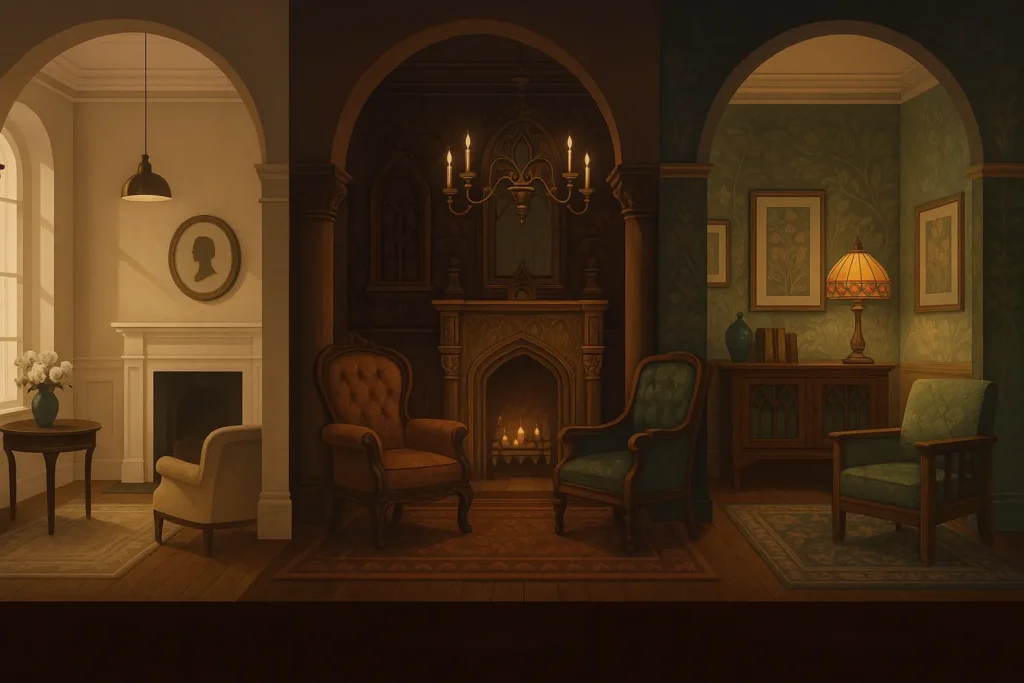
The end of the reign (1870-1901) marked the appearance of new trends such as the movement Arts and Crafts, led by William Morris, which advocated a return to excellent craftsmanship in the face of rampant industrialization. This period also saw the emergence of the Liberty style, which was largely inspired by oriental motifs while heralding Art Nouveau.
Through these developments, the Victorian style has managed to retain its essence: a constant search for beauty and refinement in a world undergoing industrial and social transformation.
The essential features of an authentic Victorian-style house
Recognizing an authentic Victorian interior is almost self-evident, given its distinctive features. Eclecticism is its primary characteristic: a harmonious blend of diverse influences where neo-Gothic, neoclassical and oriental references coexist. This fusion of styles perfectly reflects the United Kingdom's openness to the world and its status as a colonial power.
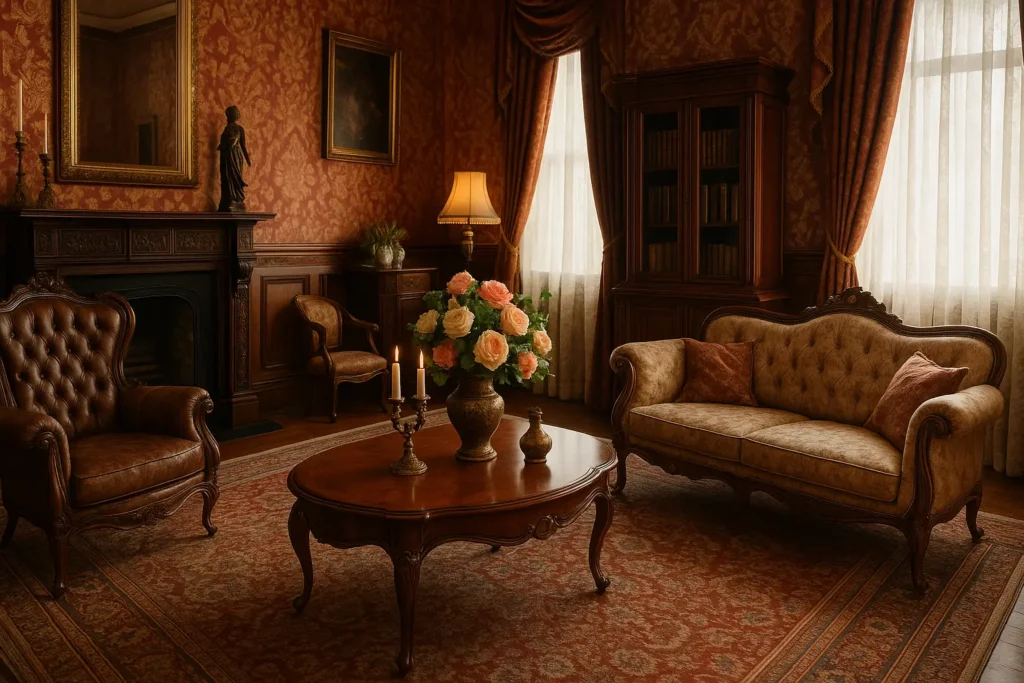
Opulence reigns supreme in these spaces, where the horror of emptiness seems to be the watchword. The walls are adorned with richly ornamented wallpaper, the windows disappear beneath imposing draperies, while massive furniture occupies every available corner. This decorative abundance is a testament to British prosperity and the desire to display social success.
The art of symmetry also characterizes theVictorian style house layout. THE Victorian furniture are organized in a balanced way around a focal point, often an ornate marble fireplace or an imposing bookcase made of precious wood. This search for formal harmony contrasts with the profusion of ornaments and creates a sophisticated visual balance.
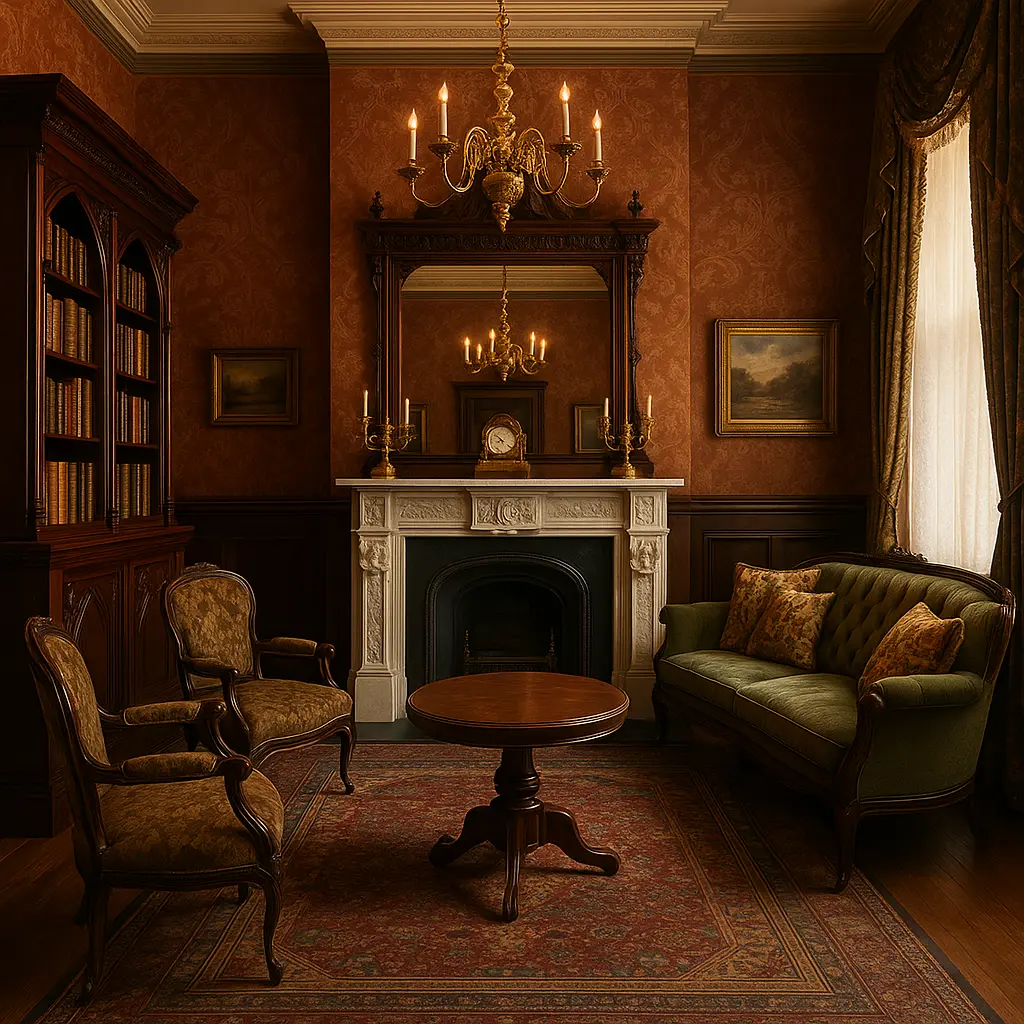
The noble materials and sumptuous finishes of the Victorian style
THE Victorian style favors noble and durable materials, reflecting a society that values sustainability and artisanal excellence. Wood plays a prominent role, particularly mahogany imported from the colonies, walnut with warm tones, dark rosewood and robust oak. These species undergo treatments that enhance their natural beauty: glossy varnishes and careful polishing give them an almost shimmering appearance.
Leather, often upholstered for seating, adds a touch of masculine refinement. Velvet, meanwhile, adorns sofas, armchairs, and curtains, offering a sensual and luxurious texture. Precious metals are not left behind: gilded bronze, polished brass, and silver adorn furniture and decorative accessories.
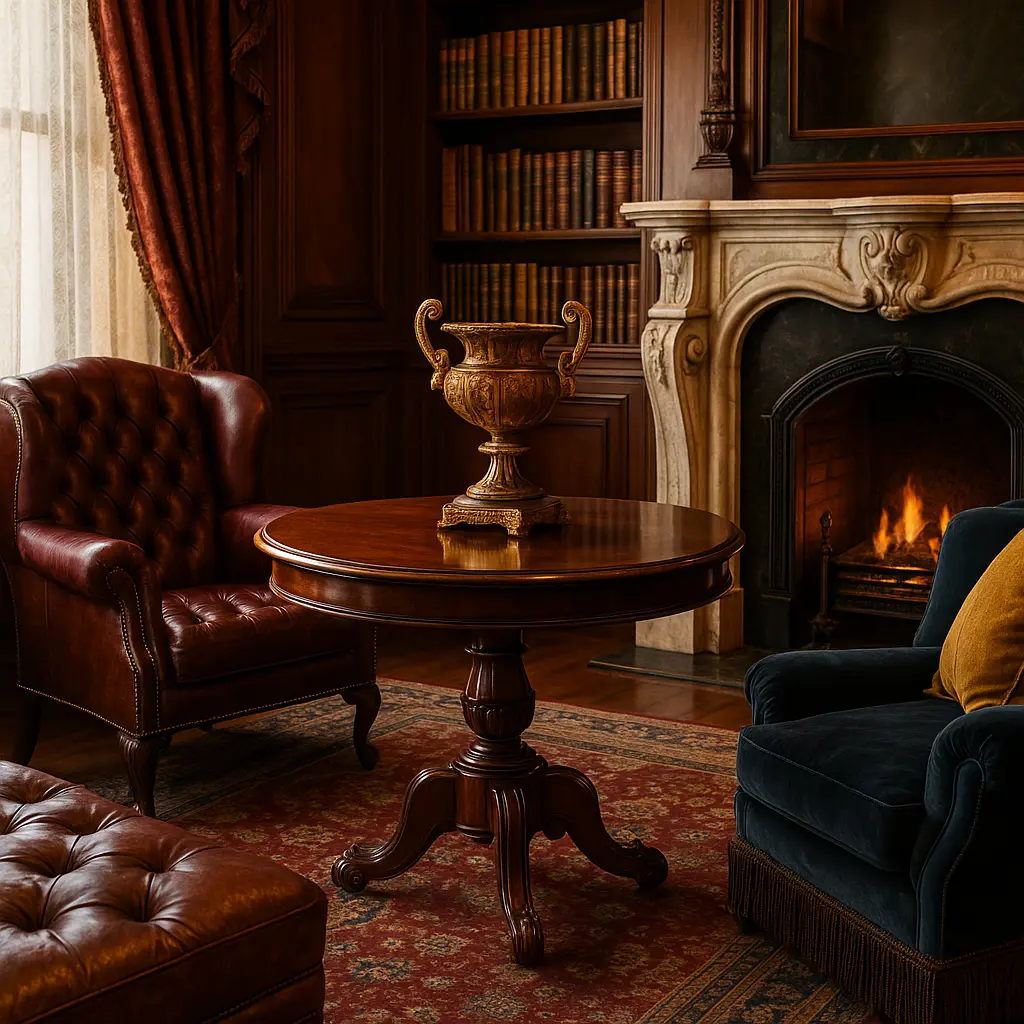
Marble, a symbol of timeless luxury, is found on dresser tops, fireplaces, and sometimes even the floors of the most opulent homes. These noble materials are accompanied by meticulous finishes: delicate carvings, precious inlays, and refined moldings are a testament to the expertise of British craftsmen of the time.
Victorian Style Colors: Richness and Depth
Victorian interiors are characterized by a palette of dark, rich colors that create an enveloping and theatrical atmosphere. Deep burgundy evokes warmth and opulence, while fir green brings a sophisticated touch of nature. Chocolate browns, golden ochres, and charcoal grays complete this intense color palette.
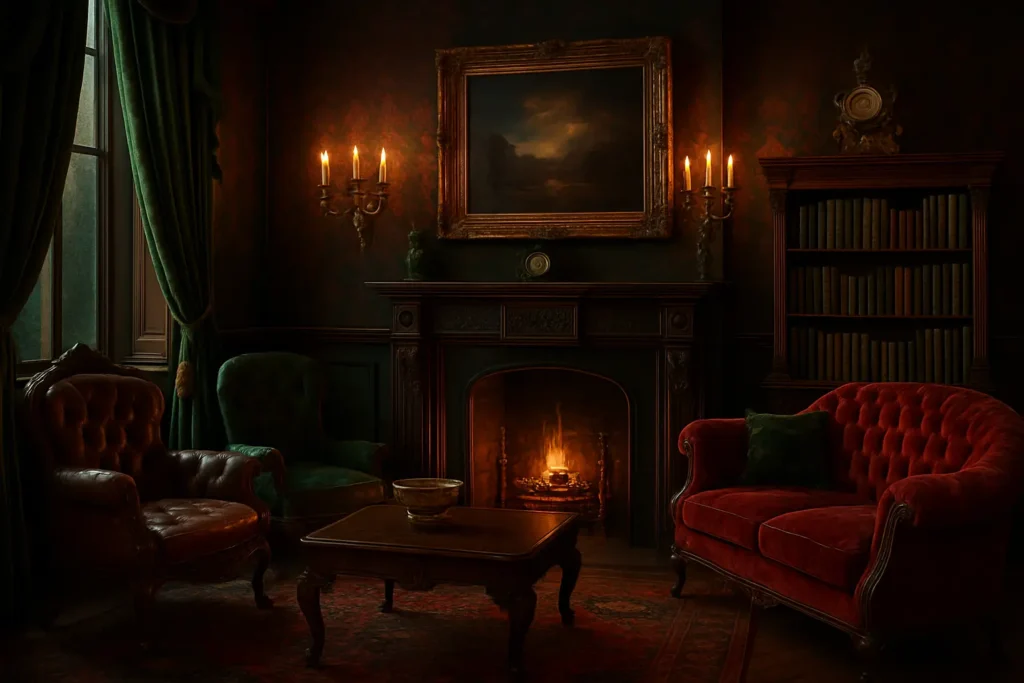
These deep colors provide the perfect backdrop for dark wood furniture and fine decorative objects. They also create an intimate and protective atmosphere, reflecting the Victorian conception of the home as a refuge from the hustle and bustle of the industrial world.
To enhance this austere palette, touches of brighter colors appear occasionally: vibrant reds, royal blues and luminous golds bring contrast and dynamism to the whole. This tension between sobriety and brilliance characterizes Victorian aesthetics in all its complexity.
Victorian-style furniture: when robustness meets decorative refinement
THE Victorian furniture perfectly embodies the alliance between British solidity and decorative elegance. Imposing and majestic, it bears witness to an era when domestic space did not face today's constraints. Each room is distinguished by its generous proportions, graceful curved lines, and richly carved ornamentation.
The construction of these Victorian furniture reflects British craftsmanship excellence, with perfect joints ensuring exceptional durability. The curved legs, the ornate cornices and the ornate handles are the signature of a style that leaves no detail to chance. This meticulous attention transforms each piece of furniture into a true work of functional art.
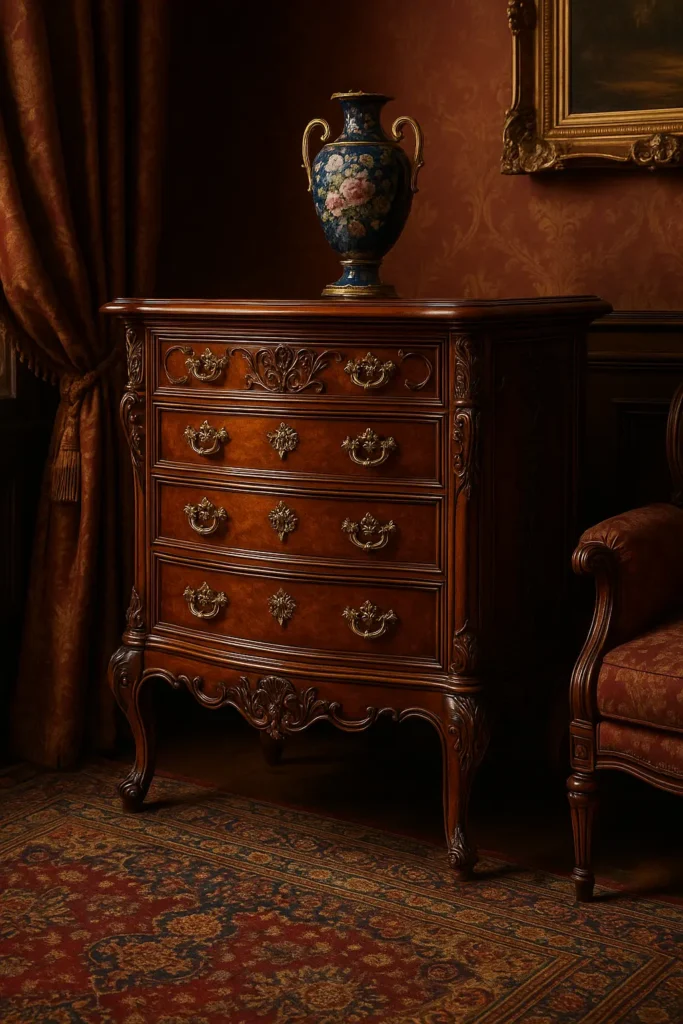
The emerging industrial production allowed for a wider distribution of this furniture, but pieces intended for the bourgeoisie and aristocracy retained a level of craftsmanship. This duality between tradition and modernity characterizes the Victorian era in all its aspects, including its iconic furniture.
The key pieces of a Victorian-inspired living room
In the development of a authentic Victorian living room, certain pieces of furniture play a central role. The imposing bookcase, often occupying an entire wall, testifies to the importance given to culture and knowledge. Made of mahogany or solid oak, it generally features glass doors that protect and showcase a collection of bound books.
The sofa and armchairs, generously padded and covered in velvet or tufted leather, invite you to moments of distinguished relaxation. The meridian, with its characteristic asymmetrical shape, offers an elegant resting space while constituting a remarkable decorative element.
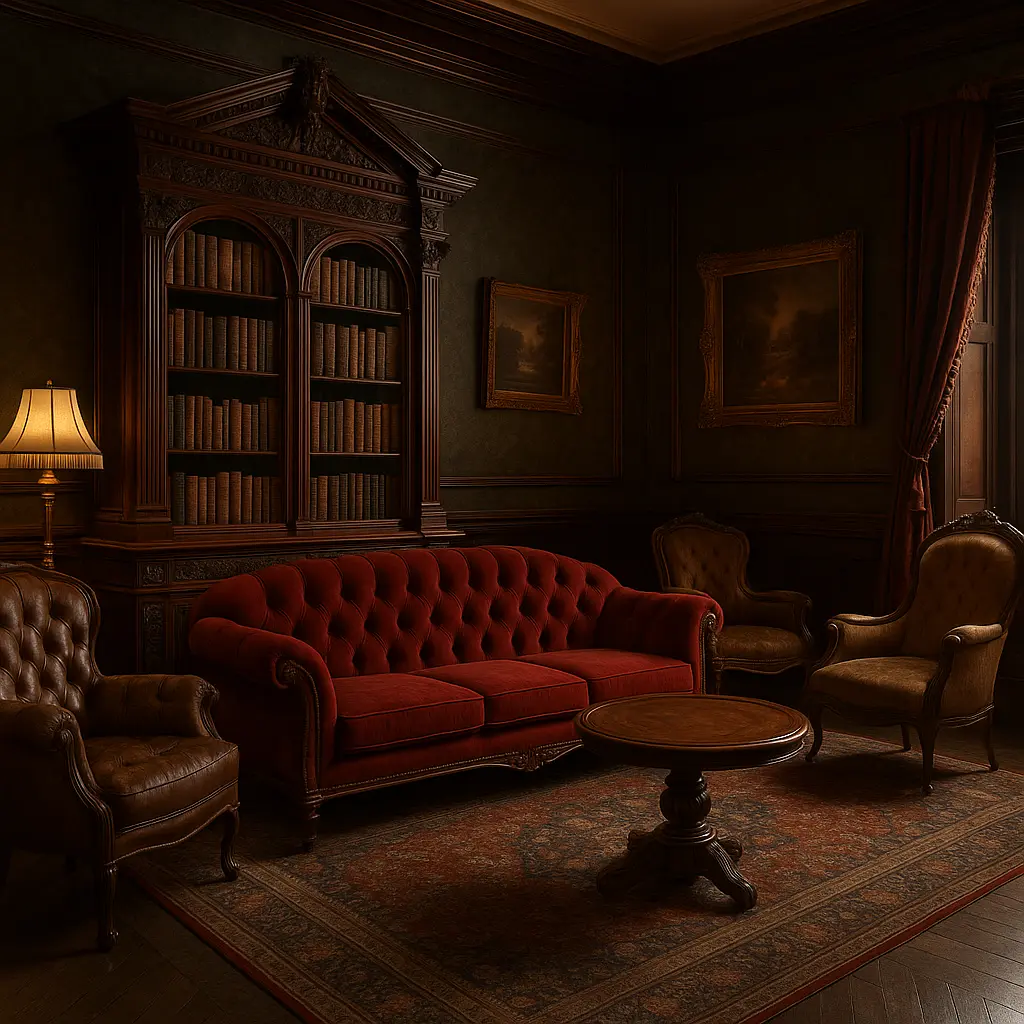
| Victorian seat type | Features | Preferred materials |
|---|---|---|
| Bergère armchair | Enveloping backrest, padded armrests | Mahogany wood, velvet |
| Chesterfield sofa | Full upholstery, backrest at the same height as the armrests | Leather, walnut wood |
| Meridian | Asymmetrical shape, backrest on one side only | Carved wood, damask fabrics |
| Voltaire armchair | High back, protective side cheeks | Oak wood, velvet |
Tables also play an important role: tea tables, occasional tables, marquetry games tables... Each one serves a specific social purpose and contributes to the British art of living. The generously proportioned sideboards and chests of drawers complete this ensemble, providing storage space while contributing to the opulent atmosphere characteristic of the Victorian era.
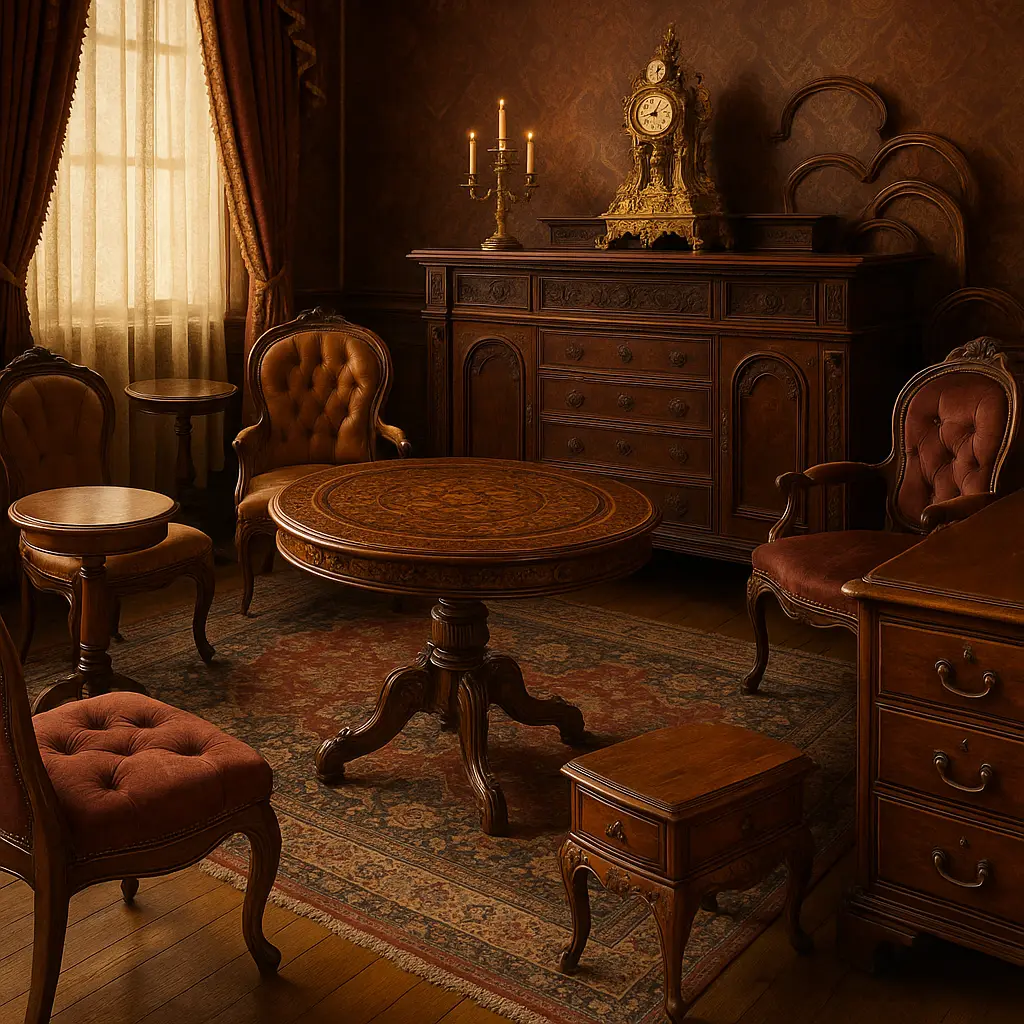
Precious wood species and their characteristic finishes
Victorian furniture favored rich, richly hued woods, largely imported from the British colonies. Mahogany, with its reddish hues and fine grain, was the signature wood of this period. Its ability to accommodate detailed carving made it the ideal material for stately pieces.
Walnut, with its warmer, amber tones, brings a touch of warmth to interiors. Rosewood, particularly prized for its contrasting grain, is often used for the most exquisite furniture. Oak, a symbol of British robustness, is experiencing a revival with the Gothic Revival movement.
These woods undergo treatments which enhance their natural beauty. Shellac varnish, applied in multiple layers, gives surfaces an incomparable shine. Careful waxing protects the wood while giving it a characteristic patina that deepens over time. These finishes demonstrate excellent craftsmanship and contribute to the nobility of Victorian furniture.
Victorian Fabrics and Wallpapers: The Art of Sumptuous Patterns
Textiles played a central role in the Victorian atmosphere, bringing texture, color, and warmth to interiors. The abundance of fabrics reflected both material comfort and a concern for comfort, a central value in the British concept of the home. Luxurious fabrics and elaborate patterns constitute the textile signature of this prosperous era.
Velvet reigns supreme, adorning sofas, armchairs, and curtains with its deep hues and sensual texture. Silk, imported from the Orient, brings its precious shine to cushions and drapes. Toile de Jouy, with its bucolic or exotic scenes, lines the walls and seats of the most refined homes.
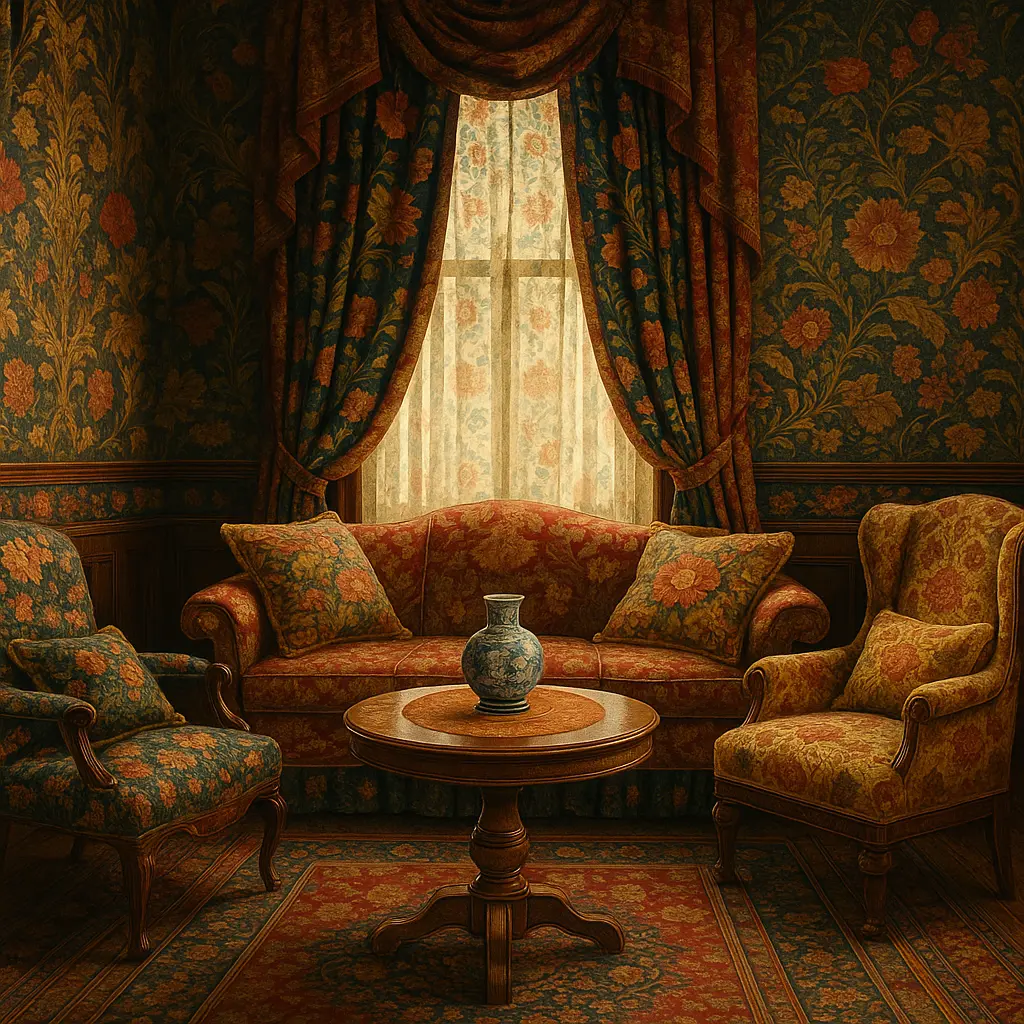
Floral patterns dominate the Victorian decorative directory, with a predilection for roses, peonies, and lilies depicted in a detailed, naturalistic style. Geometric prints, inspired by Eastern traditions, provide structure and rhythm. Scottish tartan, a symbol of British unity, is occasionally featured to assert national identity.
William Morris's Artistic Legacy: Nature and Craft
William Morris occupies a central place in the evolution of the Victorian decorative style. A versatile artist, designer, and socialist thinker, he opposed mass industrialization by advocating a return to excellent craftsmanship. His textile designs and wallpapers revolutionized the aesthetics of his time with their naturalistic elegance.
Inspired by medieval tapestries and British flora, Morris developed stylized plant motifs of great beauty. Its harmonious compositions of foliage, flowers and fruits demonstrate a meticulous observation of nature and exceptional technical mastery. Each motif is hand-drawn and then reproduced using traditional printing techniques.
- Strawberry Thief: iconic motif depicting birds stealing strawberries in an English garden
- Acanthus: Inspired by Mediterranean foliage, this intricate pattern evokes classical antiquity
- Willow Bough: delicate depiction of intertwined willow branches
Morris's influence extends far beyond his time, heralding Art Nouveau and inspiring generations of designers. His holistic approach to decoration, in which each element contributes to an overall aesthetic vision, remains strikingly modern.
Victorian draperies: theatricality and textile opulence
THE Victorian windows literally disappear beneath imposing draperies that constitute an architectural element in their own right. These sumptuous curtains fulfill several functions: they protect from excessive light, maintain heat, and affirm the social status of the inhabitants.
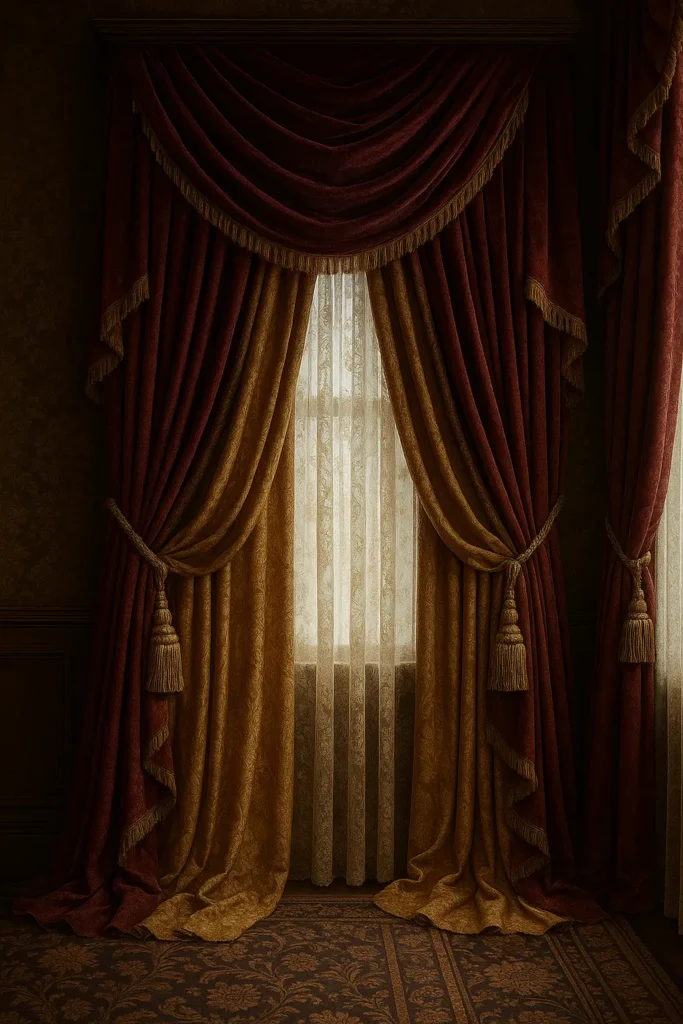
The classic composition combines several textile layers: a light veil in lace or muslin, filtering the light while preserving privacy, and thick curtains in velvet or damask which frame the opening. These heavy drapes with generous folds often descend to the ground, creating a particularly theatrical textile waterfall effect.
Ornate tiebacks, crafted from trimmings or precious metal, hold the curtains back in an elegant curve. The rods, visible and decorative, feature sculpted finials that extend the room's ornamental vocabulary. This elaborate textile ensemble demonstrates the importance placed on detail in Victorian aesthetics.
The magic of Victorian lighting: creating an intimate and refined atmosphere
Lighting is a fundamental element of Victorian ambience, helping to create that characteristic atmosphere, both intimate and theatrical. At a time when electricity was in its infancy, British interiors favored soft, subdued lighting, conducive to conversation and refined domestic activities.
Contrary to current trends that value abundant natural light, Victorian aesthetics cultivate a relative penumbra, perceived as more flattering and mysterious. The windows, often partially obscured by thick draperies, allow a controlled brightness to filter through, highlighting the dark woodwork and precious textiles.
This subtle management of light creates areas of shadow and light that structure the space and guide the eye toward the most precious decorative elements. The strategically placed mirrors amplify this sparse luminosity while giving a sense of space to the densely furnished interiors.
Sumptuous lighting fixtures that combine function and decoration
Victorian lighting fixtures are truly functional sculptures that contribute to the decorative opulence. Imposing crystal chandeliers dominate reception rooms, their pendants refracting the light into a thousand sparkling shards. These centerpieces, often imported from Bohemia or France, reflect the cosmopolitan taste of the British aristocracy.
Wall sconces, generally made of gilded bronze or brass, extend this ornamental vocabulary onto the walls. Their sinuous arms, inspired by plant or mythological motifs, support opaline glass globes or cut crystal tulips. These wall lights create luminous focal points which punctuate the space and highlight paintings and tapestries.
Table lamps, whether oil-burning models or early electric versions, feature sculpted bases topped with generous shades of pleated fabric or colored glass. These movable lighting points made it possible to adapt the lighting ambiance to the various social activities that enlivened the Victorian home.
Victorian Mirrors: Light Multipliers and Framing Masterpieces
In the Victorian world, the mirror went far beyond its utilitarian function to become a major decorative element. The frames, true feats of craftsmanship, rivaled each other in sophistication with their gilded moldings, floral sculptures, and neoclassical or neo-Gothic ornaments.
Strategically placed to capture and reflect natural or artificial light, these mirrors visually expand a space while creating intriguing perspectives. The largest, often placed above fireplaces, become the focal point of the room, framing the occupants' reflections in a sumptuous setting.
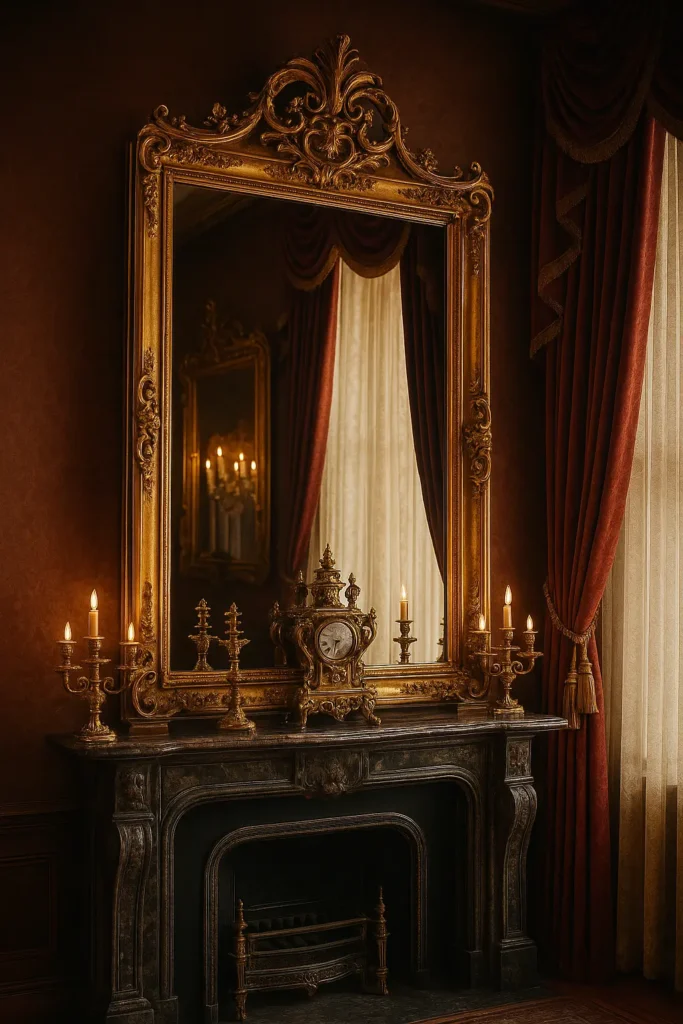
Overmantel mirrors, mirrors integrated into decorative panels, adorn mantelpieces and window openings. Psyche mirrors, mounted on a pivoting support, allow you to examine your outfit from all angles. testifying to the importance given to appearance in Victorian societyThese reflective surfaces, omnipresent in interiors, contribute to the scintillating and theatrical atmosphere characteristic of this era.
Victorian Decorative Accessories: Cultivating the Art of Refined Detail
The Victorian interior is distinguished by a profusion of decorative objects that occupy every available surface. This accumulation, far from being disorderly, obeys a logic of controlled ostentation that reflects the social status and interests of the inhabitants. Each trinket, carefully chosen and positioned, participates in a complex visual narrative that evokes travel, culture and refinement.
Chinese and Japanese porcelain vases, arranged on console tables and mantelpieces, bear witness to the British Empire's trade relations with the Orient. Biscuit or bronze figurines depicting mythological figures, historical scenes, or exotic animals populate shelves and occasional tables.
Scientific objects, such as globes, ornate barometers, and optical instruments, reflect the Victorian fascination with technological progress and world exploration. Glass-domed clocks, with their intricate mechanisms visible, combine technical prowess with refined aesthetics.
- Fine china tea services, often decorated with delicate floral designs, occupy a central place in British social ritual.
- Music boxes, sophisticated entertainment objects, enchanted Victorian evenings with their mechanical melodies.
- Silver or carved wooden photographic frames display family portraits, testifying to the importance of family ties in Victorian society.
These decorative accessories are not simply ornamental; they tell the personal stories of the inhabitants, their travels, their artistic tastes and their social connections, transforming the interior into a true visual autobiography.
The plant kingdom in Victorian decoration
Flowers and plants occupy a privileged place in the Victorian decorative universe. At a time when a true language of flowers was developing, floriography, each bouquet or plant arrangement has a symbolic meaning understood by the initiated. Roses evoke love, lilies purity, carnations distinction...
Fresh bouquets, arranged in precious vases, are a vibrant and colorful element that contrasts with the often dark tones of the interiors. Elaborate floral arrangements, inspired by French or Italian styles, take pride of place on the central tables and ceremonial consoles.
Indoor plants, favored by the invention of greenhouses, bring an exotic touch. Tree ferns, palms and aspidistra thrive in the confined atmosphere of British drawing rooms, creating corners of domesticated jungle that evoke the distant territories of the Empire. These plants are presented in decorated earthenware, porcelain, or bronze planters, which are themselves elaborate decorative objects.
Cabinets of curiosities and exotic collections
The Victorian era saw the blossoming of a passion for collecting and classification, reflecting a scientific approach to the world. Bourgeois and aristocratic interiors were adorned with veritable cabinets of curiosities accumulating rare objects, natural specimens, and exotic artifacts brought back from the four corners of the Empire.
Pearly shells, butterflies pinned under glass, and strangely shaped minerals all bear witness to this fascination with natural wonders. Egyptian, Greek, and Roman antiquities, collected during the Grand Tour or archaeological expeditions, affirm the classical culture of their owners.
Ethnographic objects – African masks, Indian weapons, Asian textiles – brought back from the British colonies constitute trophies that tell the story of imperial expansion. These diverse collections, presented in specially designed display cases, transform the domestic space into a private museum where the world is exhibited in all its exotic and fascinating diversity.
Adapting Victorian Style to Your Modern Interior
Incorporating Victorian style into a contemporary home doesn't mean turning your home into a period museum. The art lies in selecting and adapting the most iconic elements of the period to create a space that retains its modern comforts while enriching itself with refined historical touches.
The first approach is to gradually introduce authentic Victorian pieces. A tufted armchair, a mahogany side table or a gold-framed mirror can become the focal point of an otherwise contemporary layout. These antique elements add character and historical depth without overwhelming the space.
Victorian motifs can be reinterpreted in a more contemporary palette. Wallpapers inspired by William Morris designs are enjoying a resurgence, particularly when used on a single wall to create a controlled decorative effect. Similarly, textiles with traditional floral patterns blend harmoniously with clean-lined furniture.
- Choose natural and noble materials: solid wood, marble, leather, velvet, brass
- Create privacy zones with soft, strategic lighting
- Incorporate some authentic Victorian decorative objects among your contemporary accessories
Balance remains the key: it's about infusing the Victorian spirit without sacrificing the fluidity and functionality of modern spaces. This fusion of past and present creates unique interiors, rich in history but resolutely rooted in their time.
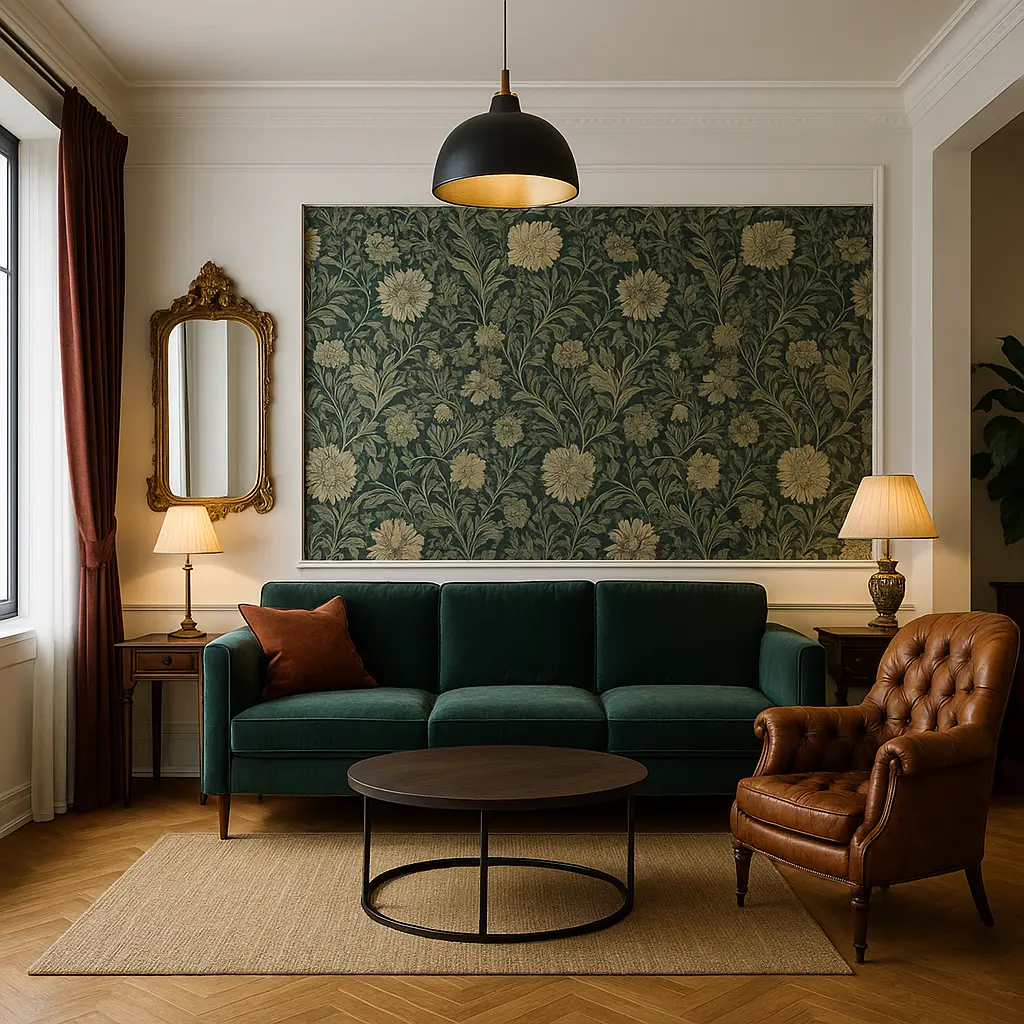
Harmonizing ancient and contemporary: the art of the right balance
The secret to successfully integrating Victorian style into a modern interior lies in creating a harmonious dialogue between the eras. Rather than pitting styles against each other, seek to create visual conversations between old and new pieces that share formal or color affinities.
An authentic Victorian sofa can sit alongside a minimalist coffee table if their proportions are balanced. Contemporary paintings take on a new dimension when framed in Victorian-inspired gilded moldingsThese controlled contrasts create a stimulating visual tension that avoids the pastiche effect.
Reinterpreting Victorian decorative techniques with contemporary materials offers exciting possibilities. Wall moldings, an architectural signature of the era, can be simplified and painted in contemporary tones to structure the space while subtly evoking British heritage.
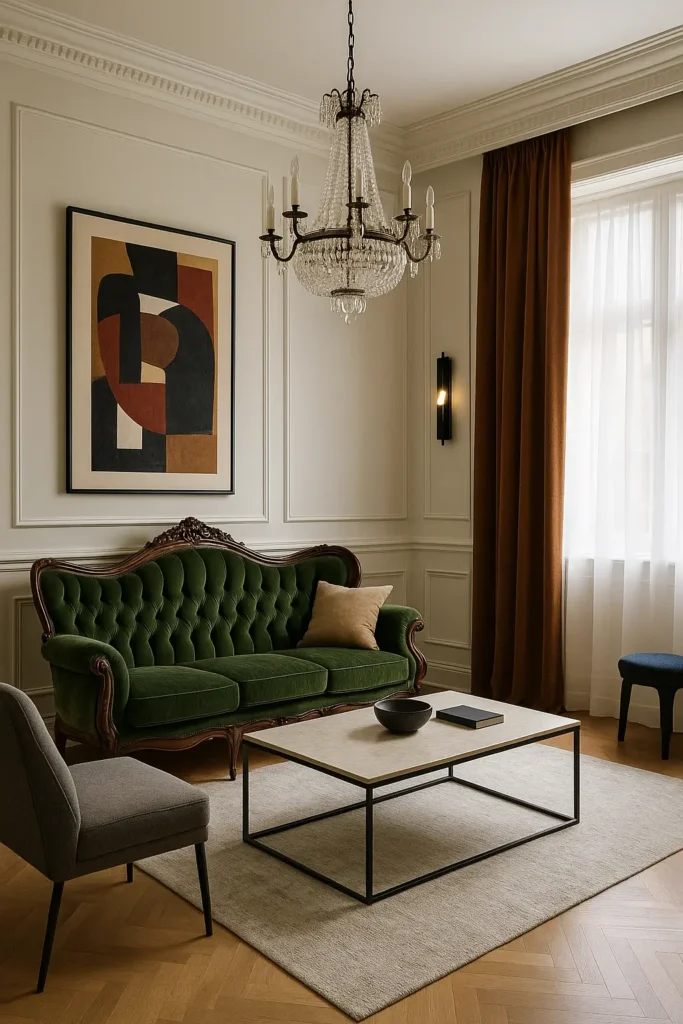
Lighting plays a crucial role in this fusion of eras. A Victorian crystal chandelier can become a striking centerpiece in a modern kitchen, while contemporary sconces bring a modern touch to a Victorian-inspired living room.
Modernize Victorian Style for Bright Spaces
The traditional Victorian color palette, dominated by dark, saturated tones, can be adapted to contemporary preferences for brighter spaces. Without sacrificing the spirit of the era, it is possible to significantly lighten the atmosphere by playing with shades and proportions.
The iconic deep colors – burgundy, fir green, navy blue – can be used as an accent
Signature deep colors – burgundy, fir green, navy blue – can be used as accents rather than dominant hues. These rich tones bring depth and character when applied to a statement piece of furniture, a wall section or textile accessories, while preserving the general brightness of the space.
Neutral shades like warm beiges, pearl grays, and off-whites provide an excellent contemporary base that highlights Victorian elements. This approach maintains British elegance while creating airy, bright interiors that meet today's expectations.
Metallic colors, especially golds and coppers, can work well as substitutes for dark woods to evoke Victorian richness without the heavy feel. These glossy finishes capture and reflect light, creating that glittering atmosphere characteristic of Victorian state interiors in a more contemporary language.
This chromatic reinterpretation preserves the essence of Victorian style—its refinement, visual richness, and formal elegance—while adapting it to 21st-century aesthetic sensibilities and lifestyles. The Victorian heritage thus becomes a living source of inspiration rather than a fixed model to be slavishly reproduced.
Over the seasons, I've seen how this balanced approach appeals to many people looking to infuse their interiors with character and historical depth. The revisited Victorian style offers the decorative richness that our contemporary spaces sometimes lack, while adapting perfectly to our aspirations for comfort and authenticity.
Whether in a country home or an urban apartment, these British-inspired touches instantly create an enveloping, refined atmosphere that's a joy to live in. Like a subtle journey through time, they reconnect us to a way of life where beauty and function blended harmoniously in every detail of everyday life.
